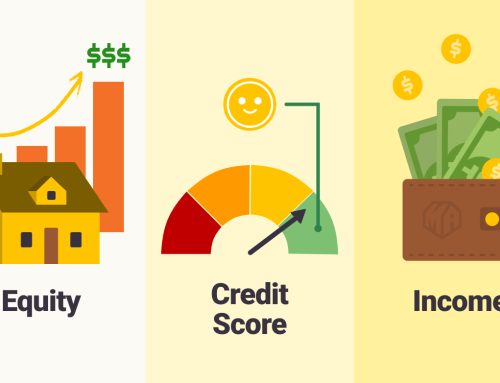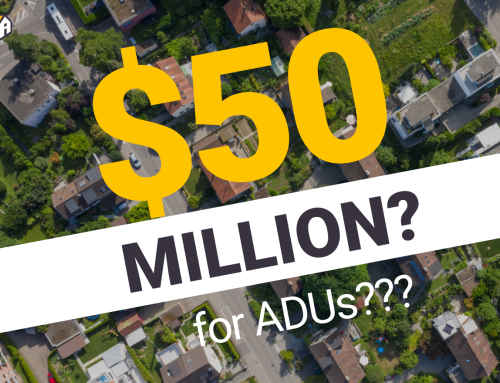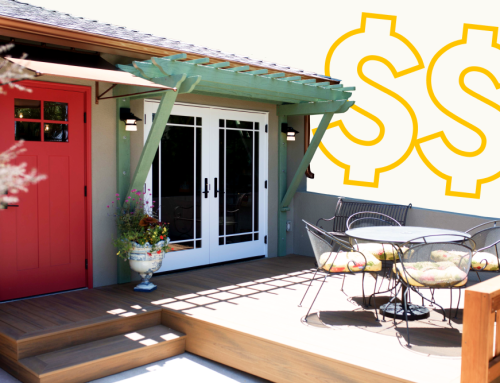We all wish money grew on trees, especially in the face of costly projects like building a brand new ADU. While some people have the cash on hand to fund a project of that expense, most people do not and will need an ADU loan.
That’s why it’s so important to find a way to finance your ADU project in a way that aligns with your specific situation, both economic and otherwise.
How much does an ADU cost?
Most people grossly underestimate the cost of building an ADU and are shocked to learn that building one for under $100,000 is not very realistic. To be prepared, you should expect the price tag to contain six figures.
For reference, the starting cost for a garage conversion can run anywhere from $130,000 in Southern California to $159,000 in the Bay Area. Meanwhile, the starting cost for a detached ADU is generally between $240,000 – $275,000. Keep in mind that the bigger the ADU, the greater the expense.
The reason they’re so expensive? There are many fixed costs to building any home, regardless of size. Although ADUs contain a smaller footprint, they still require all the same expenses as building a standard 2,000 sq ft home.
On top of that, the smaller floor plan means you lose out on much of the “cheap” square footage (e.g., bedroom or hallway) that could offset the more expensive square footage (e.g., kitchen and bathroom).
This is yet another reason why it’s helpful to find ways to finance with an ADU loan! Here are some options to consider.
HELOC
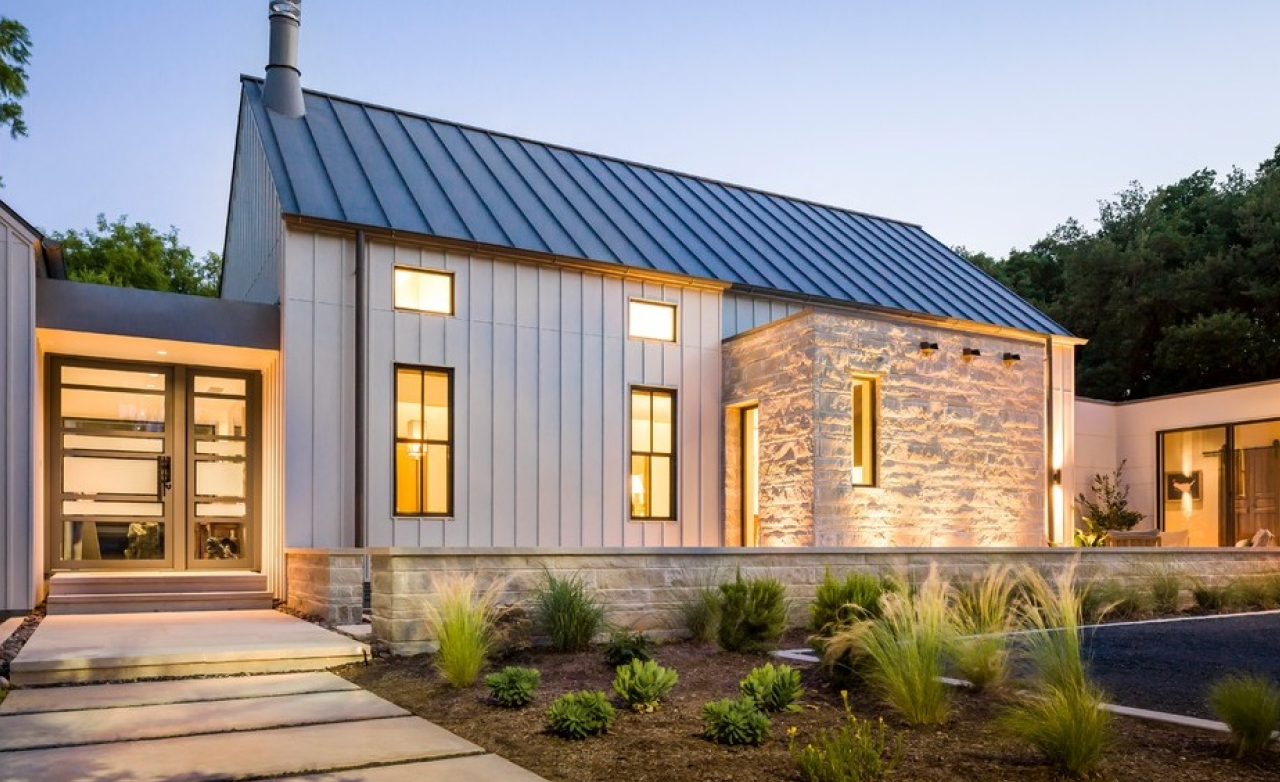
One potential ADU loan is a Home Equity Line of Credit, otherwise known as a HELOC.
A HELOC essentially allows a homeowner to borrow money from a lender, where the collateral is the borrower’s equity in their house prior to any improvements. Collateral here means that you use your home as security to protect the lender, should you default on your loan at any point.
We sat down with an ADU financing expert in a recorded interview to talk about the nuances of HELOCs and other lending options in our e-course, The ADU Blueprint. Click here to get a free preview of the first lesson.
To qualify for a HELOC, homeowners typically must meet the following requirements:
- Own at least 15-20% of the home outright; sometimes more if it’s an investment property or second home
- Credit score of at least mid 600s
- Debt-to-income (DTI) ratio of no more than 43-50%
- Proof of on-time payment history
- Proof of steady, sufficient income, even with a lot of equity
Once you have secured a lender, they may only require a drive-by appraisal depending on the equity in your home. Either way, it’s not uncommon for a bank to want an appraisal done on the house before granting a loan. Therefore, never start construction work until after you have your loan secured.
After the appraisal takes place, a lender will agree to lend a maximum amount and a timeframe. Then, you can use your HELOC like a credit card and only pay interest on your average daily balance owed.
Typically, HELOCs have repayment terms of 25 or 30 years. Aside from the repayment period, there is also a draw period, which typically ranges from 5 -15 years.
The draw period is a timeframe where you can make withdrawals from your HELOC up to the credit limit with interest-only payments on any money borrowed. After the draw period ends, your monthly payment requires principal and interest payments in order to pay off your loan in full at maturity.
To give you a better idea of how it works, here’s an example with some real numbers.
Let’s say your home is appraised by the lender at $550,000 and the mortgage balance on your 1st mortgage is $300,000. At 90% of the appraised value, you have $495,000 mortgage lien capacity. This would give you a $195,000 HELOC for whatever you want to use the money for. ($550,000 value x 90% = $495,000 – $300,000 1st mortgage = $195,000 HELOC).
HELOC’s are often used for significant life expenses, such as medical bills, education, or…you guessed it! Home improvements. But a word of caution! If you default on your loans by failing to make payments, your home will be foreclosed on. In other words, you risk losing your home entirely. So, make sure this financing option makes sense for you.
It’s also worth noting that interest rates on HELOCs are often variable, which means they can increase or decrease over time.
That being said, if you have equity in your home, a HELOC is the most straightforward way to finance an ADU, aside from paying with cash. HELOCs are also quite common. They allow a homeowner to leverage the value of their home and make improvements, which will lead to an increased value in the property.
Home Equity ADU Loan
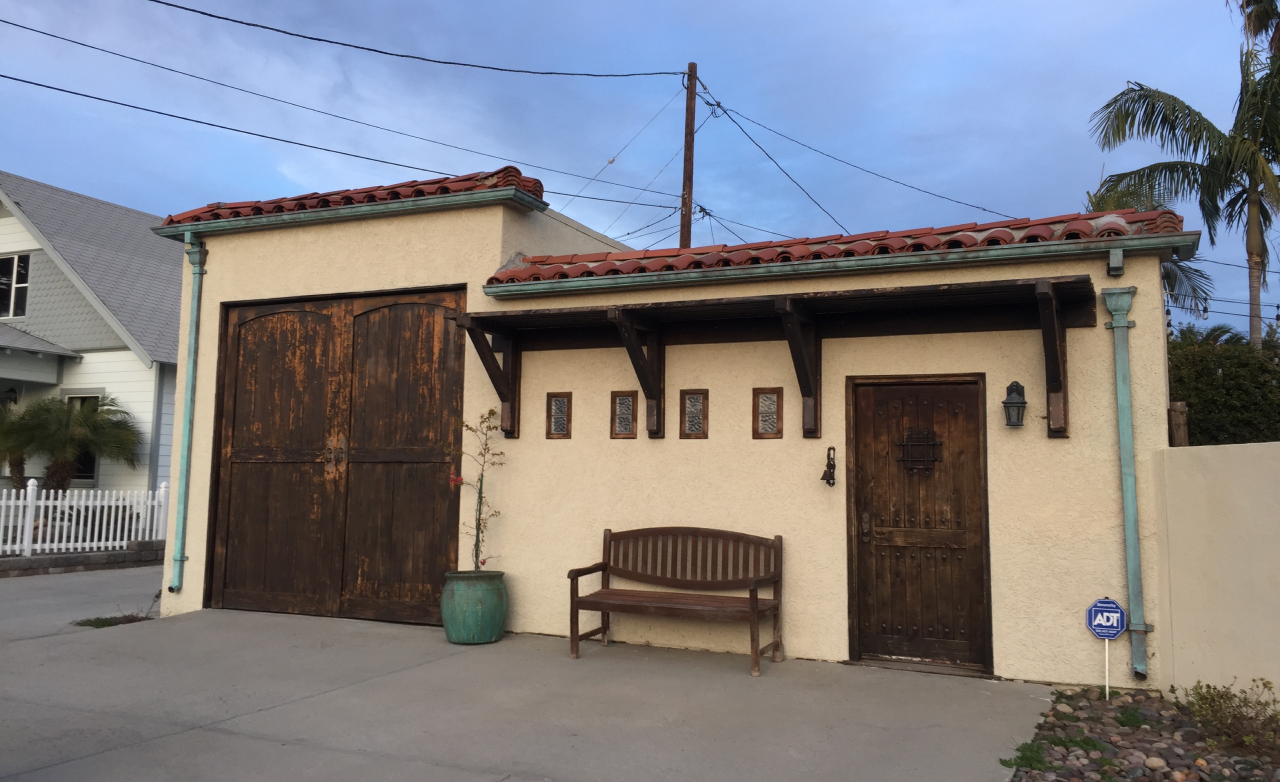
Home equity loans are another financing option to consider.
Basically, a home equity loan provides a homeowner with a fixed amount of cash (i.e., a lump sum) and a set repayment schedule (i.e. installments). Generally, you can borrow around 80-85% of the value of your home, minus what you owe on your mortgage.
On the other hand, a HELOC is structured as a revolving line of credit by giving funds to someone only when needed. This means that the amount needed can fluctuate from month to month. It also means that you could potentially have revolving debt if you don’t pay the balance every month. This would result in a revolving balance, where any unpaid portions carry over into the next month.
Another key difference between the two financing options is that HELOCs usually have a variable interest rate that fluctuates based on market changes, whereas home equity loans typically have a fixed interest rate. With a home equity loan, your rate and payment will never change throughout the life of your loan. If a variable interest rate feels too risky, then perhaps a home equity loan would be the better option for you.
However, HELOCs have shorter repayment terms than home equity loans and only charge you interest on the amount a homeowner has withdrawn. So, if your HELOC allows you access to $170k but you’ve only pulled out $20k, you’ll just be charged interest on the $20k. For anyone tight on cash, a HELOC could help pace things out a bit.
But with both a home equity loan and a HELOC, the collateral is your home.
Although requirements can vary by lender, the standard requirements for a home equity loan are the same as those listed above for a HELOC.
When you are exploring financing options and deciding between a home equity loan or HELOC, make sure you ask yourself:
- Does one-time access to funds (home equity loan) or ongoing access to credit (HELOC) better fit your home improvement needs?
- How much do you expect to borrow for this project, and how long do you anticipate it taking to complete?
- What type of repayment options fit your budget, and how long do you plan to take to pay off what you borrow?
- Do you plan on hiring a contractor to renovate your home or will you complete the project yourself?
By answering these questions, you should gain better insight into what ADU loan makes the most sense for you and your project.
Construction ADU Loan
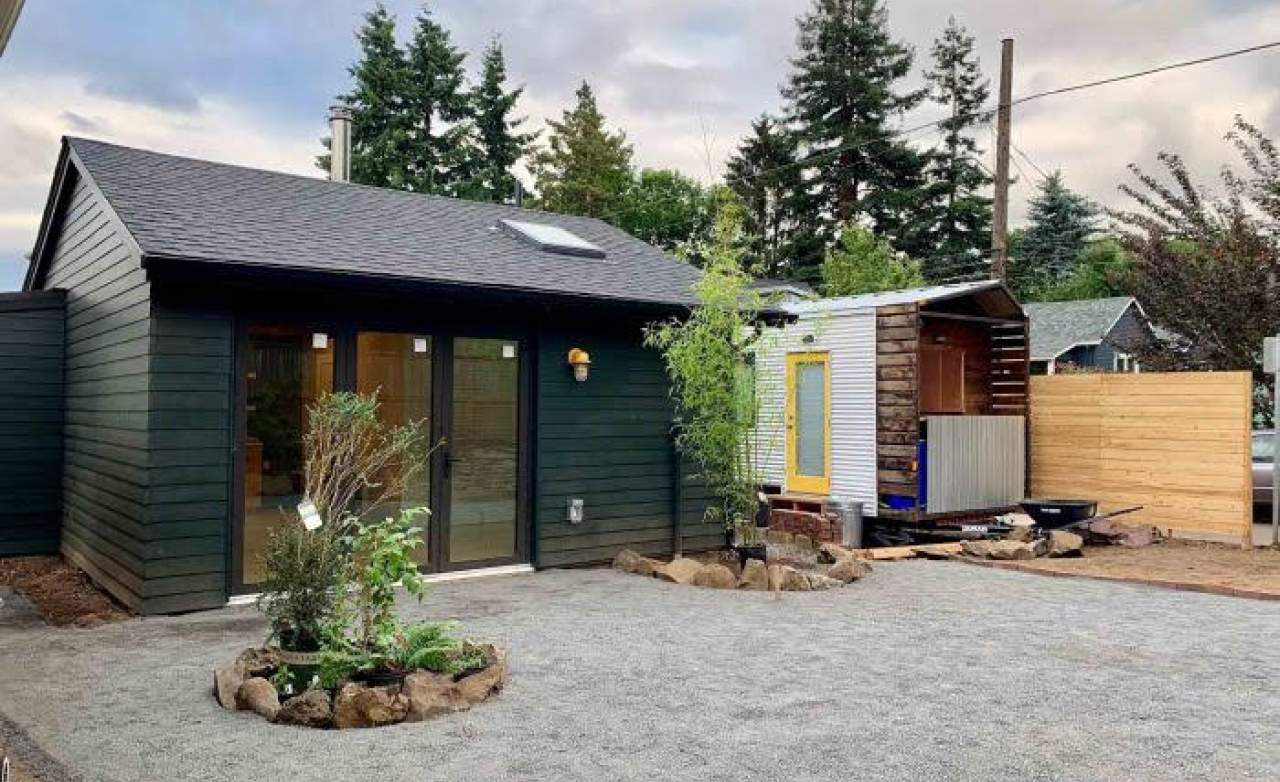
The next type of ADU loan option is a construction loan.
A construction loan evaluates what the future value of the property will be once the project is completed and allows a homeowner to borrow against that amount.
For example, let’s say your home is worth $400,000, and you want to build an ADU. First, you contact an architect and have plans drawn up. Then, you submit those plans to your bank, which in turn sends them to an appraiser. The As Complete Value (ACV) comes back at $520,000, which is a $120,000 increase in the value of your home.
This means that you can now borrow up to 95% of the ACV ($120k), which is $114k! The bank then releases funds as certain milestones are achieved in the build and inspected by a third party.
The first step in obtaining a construction loan is to find a licensed builder to take on the project. It’s always smart to shop around for the right person for the job with plenty of ADU experience and a good track record.
Then, apply for the ADU loan and submit all necessary information. Since construction loans operate under such a short timeframe (e.g., only the length of the construction project; often 1 year) and they’re dependent on the project’s process, your lender will need:
- Construction plans with a detailed timeline
- Realistic budget
- Proof that you are qualified to borrow and have the means to repay the loan. As with HELOCs and home equity loans, future rental income cannot be factored in to qualify for this loan
If the application is approved, the borrower can begin drawing funds in conjunction with each phase of the project. Remember, an appraiser will authorize more funds at key intervals of the project. Learn more about how properties with ADUs are appraised here!

Here are a few of the elements that construction loans can cover:
- Cost of the land
- Contractor labor
- Building material
- Permits
Construction loans cannot be used to pay for unrelated things like home furnishes.
After construction is completed, you have some options for repaying the loan, depending on what type of construction loan you obtained.
There are various construction loans to accommodate different project needs and timeframes (e.g., construction-only loan, construction-to-permanent loan, etc.). Get in touch with a construction-certified loan officer to discuss the various loan options and to have a guiding hand throughout the whole process.
No matter what type of construction loan you choose, one potential downside is that they are more complex for banks to finance than non-construction loans; they have many moving parts that all need to come together.
Construction loans are usually secured by the property itself, even though the home is not yet built, which means the lender could potentially take ownership of the property if the borrower fails to repay the loan. The higher risk and complexity associated with construction loans, as well as their temporary nature, do often result in higher interest rates compared to traditional mortgage loans.
Similar to HELOCs, construction loans also have variable interest rates that change with the prime (market) rate. This means that your monthly payment can also fluctuate. This is most common with two-time close construction loans, as opposed to one-time close with fixed and adjustable rates.
One-close construction loans are where the loans provide temporary financing for the project and later convert it to permanent in one application. A two-close construction loan is where a loan is provided for the project, and you must reapply for permanent financing later on.
As with any loan, there are pros and cons to weigh. Take your time in figuring out if a construction loan is the right move for you!
Home Style Renovation ADU Loan

Let’s move on to Home Style renovation loans.
If you have limited equity in your current home or plan to purchase a secondary property that needs improvements, this mortgage loan program might be the perfect solution!
So, how does it work? For anyone who loves a good fixer-upper, this loan allows you to buy the place and get the cash for renovations all in one loan. Likewise, homeowners itching to remodel their current home can refinance their mortgage and take out funds for improvements. Borrowers can also use it to finance the addition of an ADU to their home!
In other words, it’s an all-in-one loan for financing the mortgage, repairs, and upgrades based on the As-Completed value of the home (ACV). Renovation costs are limited to 75% of the As-Completed appraised value of the home and may include:
- Labor and materials
- Property inspection fees
- Architectural or engineering fees
- Independent consulting fees
- Permit and licenses
- Other documented fees including fees for energy reports, appraisals, review of renovation plans, feasibility studies, etc.
The Home Style renovation loan is a convenient and flexible way for borrowers to finance home improvements with a single first mortgage or refinance. It also prevents borrowers from having to take out a second mortgage, HELOC, or other costly financing methods.
We love keeping it simple!
Cash-Out Refinance ADU Loan

A cash-out refinance takes advantage of the equity you’ve built in your home over the years. It allows homeowners to refinance their current mortgage for more than they owe and take the difference in cash.
Consider this scenario. You have $400,000 of equity in your home and still owe $200,000. Once you decide to refinance your mortgage, you now owe $300,000. This allows you to pull out $100,000 in cash to use on your ADU!
Why $100,000? Well, you have to subtract what you still owe on your mortgage (i.e. $200,000) from the $300,000. So, greater equity means more potential money to work with.
So, how much cash can you borrow on your refinance? Well, it typically depends on your home’s value. This means you’ll need to have your home appraised. Lenders will generally cap you at 80% of your home’s appraised value, however, this can vary from lender to lender or depend on your specific circumstances.
Per usual, make sure you qualify before applying! Here are some general requirements to note:
- Credit score of at least 580
- Debt-to-income (DTI) ratio of less than 50%
- Sizable amount of equity already in your home
It’s quite common for people to choose a cash-out refinance to pay for home improvements. After all, not many homeowners have the necessary savings to take on home renovations and repairs.
However, it’s important to make sure this option is right for you. This could be a good option if:
- Interest rates have dropped substantially since the last time you financed your home
- You intend to stay in your home for several more years
- You have available equity to provide the cash-out option
- You can shorten your loan term
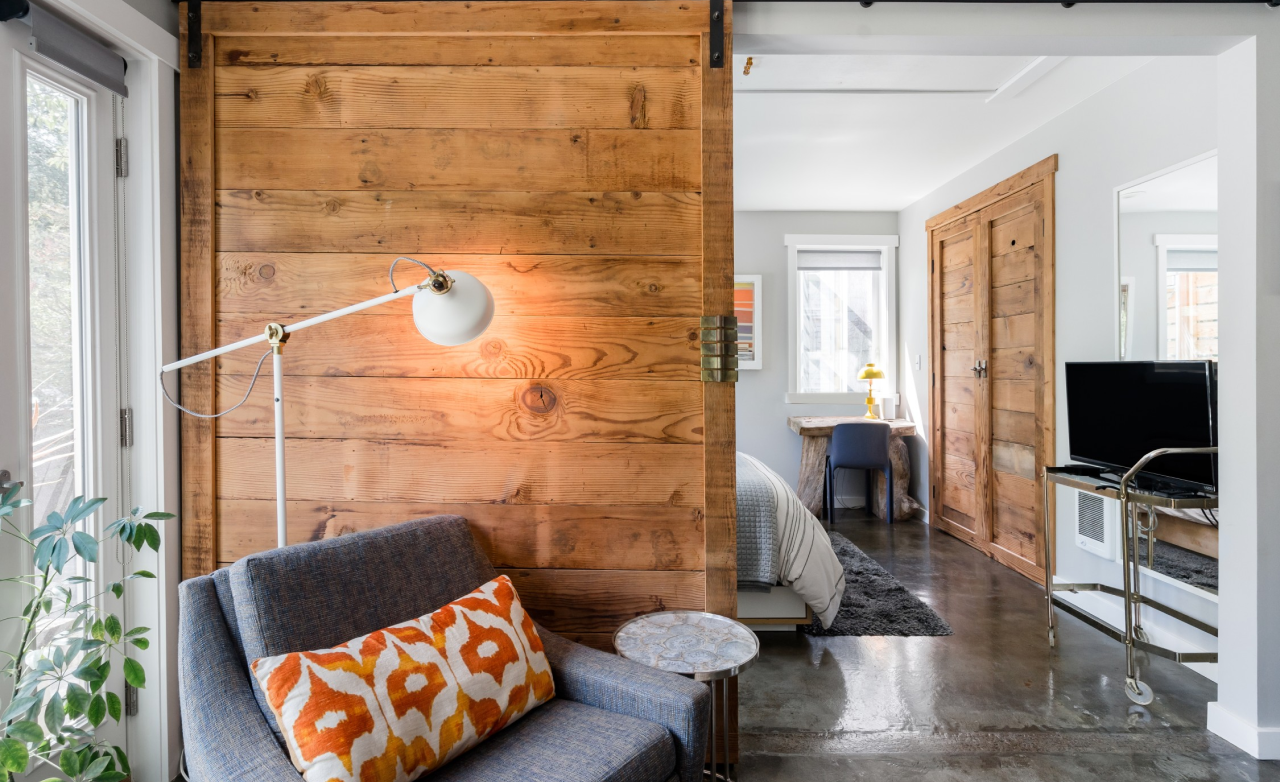
Further, make sure to weigh the benefit of how you intend to use the money against the timeframe it will take to pay off the ADU loan.
For instance, the interest rate may be better than some other financing options, but this type of loan will also extend the number of years needed to pay back your loan. So, if having outstanding loans for a long period of time doesn’t work well for you, then a cash-out refi may not be the greatest fit.
Renting out your newly constructed ADU can help generate revenue to pay back your loan quicker. But keep in mind that any future rental income will not help you qualify for a mortgage loan.
Before choosing the cash-out refi option, answer these questions:
- How many years until the end of the term of your current loan?
- How long is the term of the new loan?
- Are interest rates lower than your current financing?
- How much cash do you need?
- What’s the monthly payment amount?
- What’s the effect on your taxes?
- What’s the total cost of borrowing?
- What’s your break-even point?
These are important questions to answer to determine if this financing option is the right move.
Cash
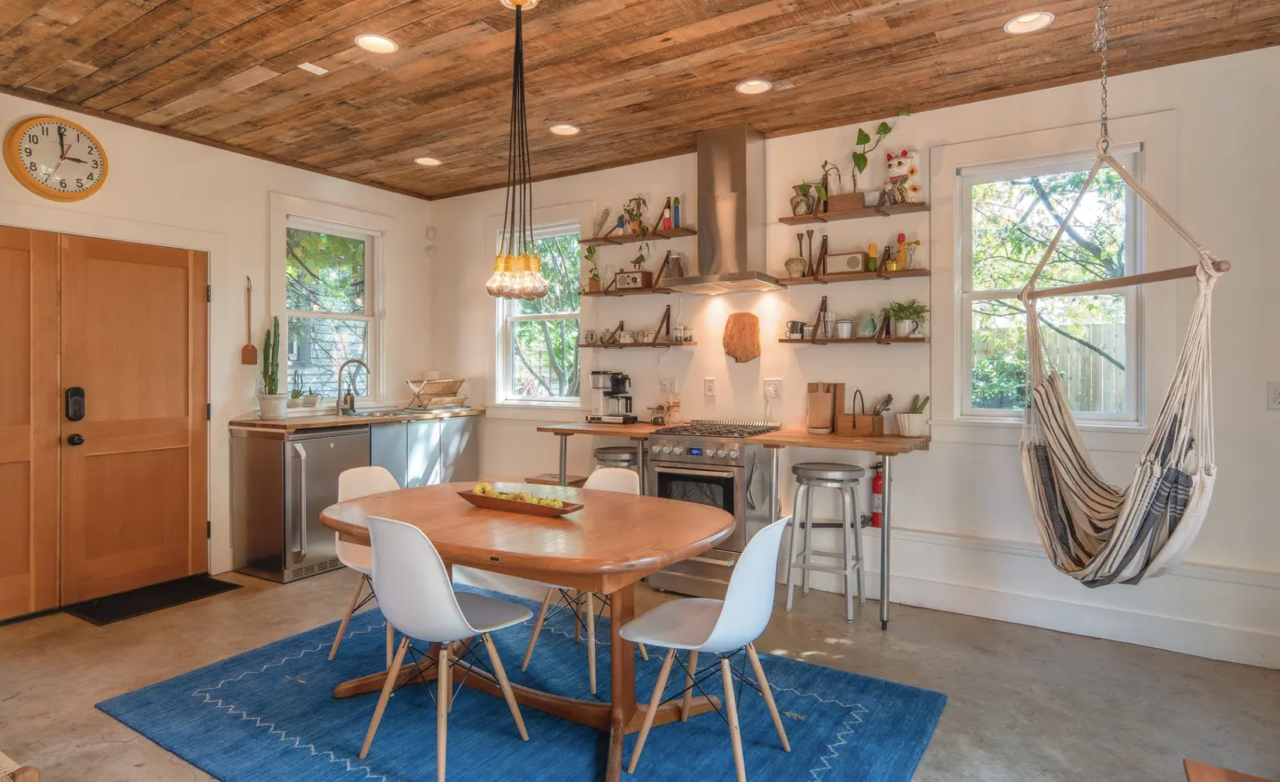
This final option is as simple as it gets…cash!
If you’re one of the lucky few who can fully fund your ADU with investments or a bank account, congratulations! This is rarely the case, but it’s by far the easiest and quickest way to finance your ADU.
Again, just make sure that you have realistic expectations of the cost to build an ADU in your area. As we pointed out earlier, they are big investments to make that most homeowners severely underestimate. Make sure you do your research and that you have sufficient savings to back a project of this magnitude.
Plan, hire, and manage your ADU project with Maxable
Figuring out the best way to finance your ADU project is an important piece of the process and can often feel stressful for homeowners. After all, money talk is usually never fun and can feel daunting with an investment as big as a new ADU.
That’s why we’re eager to take the stress off you as much as we can! At Maxable, we specialize in matching you to vetted contractors, designers, and lenders in your area once you’re ready. That’s one less thing for you to worry about! Just check your address here to get started.
We look forward to connecting with you soon!




